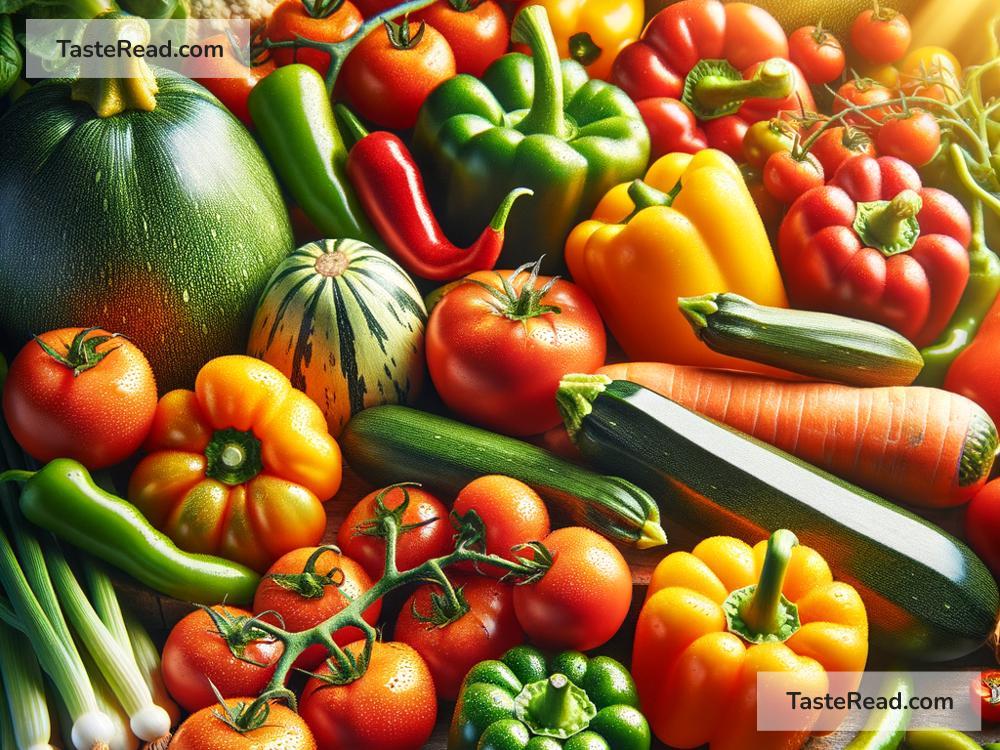How Genetic Modifications Enhance the Flavor of Hybrid Vegetables
When you walk through the fresh produce aisle at the grocery store, you’re likely greeted by a colorful variety of fruits and vegetables. Some are bright and shiny, while others seem almost too perfect, like they came out of a food magazine. Many of these vegetables, especially hybrid ones, have been developed using genetic modifications to improve not just their appearance or resistance to pests, but also their flavor.
But how exactly does this process work, and why do hybrid vegetables taste better? Let’s explore this topic in simple terms.
What Are Hybrid Vegetables?
First, what are hybrid vegetables? These are plants that result from carefully crossing two different types, or “varieties,” of the same vegetable species. The goal of hybridization is to combine the best traits of each variety into one “super” vegetable. For example, one variety of tomato might be really sweet, but soft and prone to spoilage, while another variety might be tough and long-lasting, but lacking in flavor. By crossing these two varieties, farmers can produce a tomato that is both tasty and durable.
Hybrid vegetables have been around for hundreds of years, but advancements in science, particularly genetic modifications, have taken this process to the next level.
What Are Genetic Modifications?
Genetic modifications (GM) involve tweaking the DNA of a plant to emphasize or add specific traits. DNA is essentially the plant’s instruction manual, telling it how to grow, what color it should be, how sweet it tastes, and even how resistant it is to diseases. By using modern tools like genetic engineering, scientists can target precise sections of the plant’s DNA to enhance certain characteristics.
Unlike traditional hybridization, which involves the long process of cross-breeding plants manually over several generations, genetic modifications allow scientists to achieve targeted changes much faster and with more predictable results. This is how scientists are able to improve flavors in hybrid vegetables.
Making Vegetables Taste Better
Flavor in vegetables is determined by a combination of factors like sugar content, acidity, and natural chemical compounds that provide aroma. When plants are genetically modified, scientists focus on enhancing these characteristics to give consumers a better-tasting experience.
For example:
-
Increasing Natural Sweetness: Many vegetables, such as carrots and sweet corn, get their flavor from natural sugars. Scientists can modify the plant’s DNA so it produces higher amounts of these sugars, resulting in a sweeter taste.
-
Balancing Acidity: Some vegetables, like tomatoes, have a flavor profile that’s influenced by their level of acidity. A good balance between sweetness and acidity gives tomatoes their signature “pop” of flavor. Genetic modifications can help fine-tune this balance to ensure every bite is delicious.
-
Boosting Aromatic Compounds: Aromatic compounds are responsible for the scent and complex taste of vegetables. For instance, onions have a bold, spicy flavor because of sulfur compounds. By adjusting the genes that produce these compounds, scientists can create onions that are milder or even sweeter, depending on what people prefer.
-
Preserving Flavor During Transport: Sometimes, vegetables lose their flavor while they’re being transported from farms to grocery stores. This happens because they degrade over time. Genetic modifications can enhance a vegetable’s ability to resist spoilage, ensuring that the flavor remains intact when it finally reaches your dinner table.
Examples of Tastier Hybrid Vegetables
There are already great success stories showing how genetic modifications are enhancing the flavor of hybrid vegetables:
-
Tomatoes: For years, grocery-store tomatoes were criticized for tasting bland. Scientists discovered the problem was that farmers were selecting varieties that prioritized long shelf life over flavor. With genetic modifications, researchers have been able to bring back heirloom-like flavors while maintaining durability.
-
Peppers: Bell peppers come in a variety of colors and flavors. Genetic modifications have helped make them crunchier and sweeter, especially the yellow and orange varieties.
-
Corn: Modern sweet corn varieties are far sweeter than their traditional counterparts. This improvement is thanks to genetic tweaks that increase sugar levels in the kernels.
-
Carrots: Have you noticed how baby carrots are often sweeter and juicier than regular carrots? Genetic modifications have played a role in making carrots tastier.
Are Genetic Modifications Safe?
One question people often ask is, “Are genetically modified vegetables safe to eat?” The short answer is yes. Before GM vegetables are sold, they go through years of testing to make sure they’re not harmful to humans, animals, or the environment. Organizations like the FDA (Food and Drug Administration) and USDA (United States Department of Agriculture) ensure these crops meet strict safety standards.
Why It Matters
The world’s population is growing, and people are looking for vegetables that are not only nutritious but also flavorful. When vegetables taste good, people are more likely to eat them, leading to healthier diets. Thanks to genetic modifications, farmers can grow crops that satisfy consumer preferences while also being more sustainable and resistant to challenges like climate change or diseases.
Hybrid vegetables enhanced through genetic modification are a win-win for everyone—farmers, consumers, and the planet!
Final Thoughts
Genetic modifications have revolutionized the way we grow and enjoy vegetables. By focusing on enhancing flavor, scientists have helped create hybrid vegetables that taste better than ever before. Whether it’s a sweet bite of corn or a richly flavored tomato, these innovations are making fresh produce more enjoyable for people all over the world.
So next time you sink your teeth into a perfectly sweet carrot or a juicy tomato, remember—science might just have had a hand in crafting that delightful experience!


